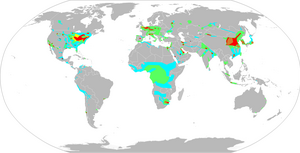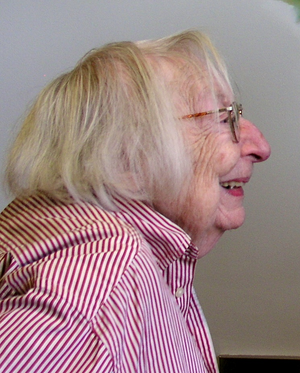 Image via Wikipedia
Image via WikipediaTransportation Noise and Blood Pressure in a Population-Based Sample of Adults (6 page pdf, Julia Dratva, Harish C. Phuleria, Maria Foraster, Jean-Michel Gaspoz, Dirk Keidel, Nino Künzli, L.-J. Sally Liu, Marco Pons, Elisabeth Zemp, Margaret W. Gerbase, Christian Schindler, Environ Health Perspect, Jan. 2012)
Today, the focus is on a study of the impacts of railway noise on residents of a city in Switzerland. Differences with noise and air pollution from vehicle traffic are noted as well as the distinguishing characteristic of railway noise being more variable in volume and in being intermittent. While no association with hypertension was found, clear links with blood pressure were found in patients with diabetes. There would seem to be a need to consider similar health effects from electric rail systems (LRTs) being constructed for public urban transit in highly populated areas of many medium to large cities in the USA and Canada.
Key Quotes:
“We aimed to investigate the effects of railway and traffic noise exposure on blood pressure; a secondary aim was to address potentially susceptible subpopulations”
“in densely populated countries with a dense railway network, such as Switzerland, railway noise should also be addressed…. an area of 35 km2 in daytime and 56 km2 in nighttime is exposed to noise levels above accepted thresholds; 100% of this area is located in urban and highly populated areas… In Switzerland, trains are electrically powered”
“The SONBASE noise model assumes that only households within a 1,000-m radius of railway tracks experience railway noise”
“No significant association was seen between transportation noise and prevalence of hypertension”
” stratified analyses yielded a significant positive association with blood pressure in participants with doctor-diagnosed diabetes”
“Traffic noise from heavily frequented streets corresponds to a continuous exposure without much variation in noise exposure levels, whereas railway noise is characterized by a discontinuous pattern of intermittent very high maximum sound pressure levels and steep slopes of rise.. The intermittent pattern of noise exposure is thought to be more disruptive”
“Effects from traffic noise were not seen in the study population as a whole, but positive associations were estimated in subjects with self-reported diabetes and CVD”
Related articles
- Health Impacts from Road Traffic and Railway Noise (pollutionfree.wordpress.com)
- Nighttime Noise and Blood Pressure (time.com)
- Road Noise from Motor Vehicles in Europe (pollutionfree.wordpress.com)
- School location may impact kids' health (cbc.ca)





























